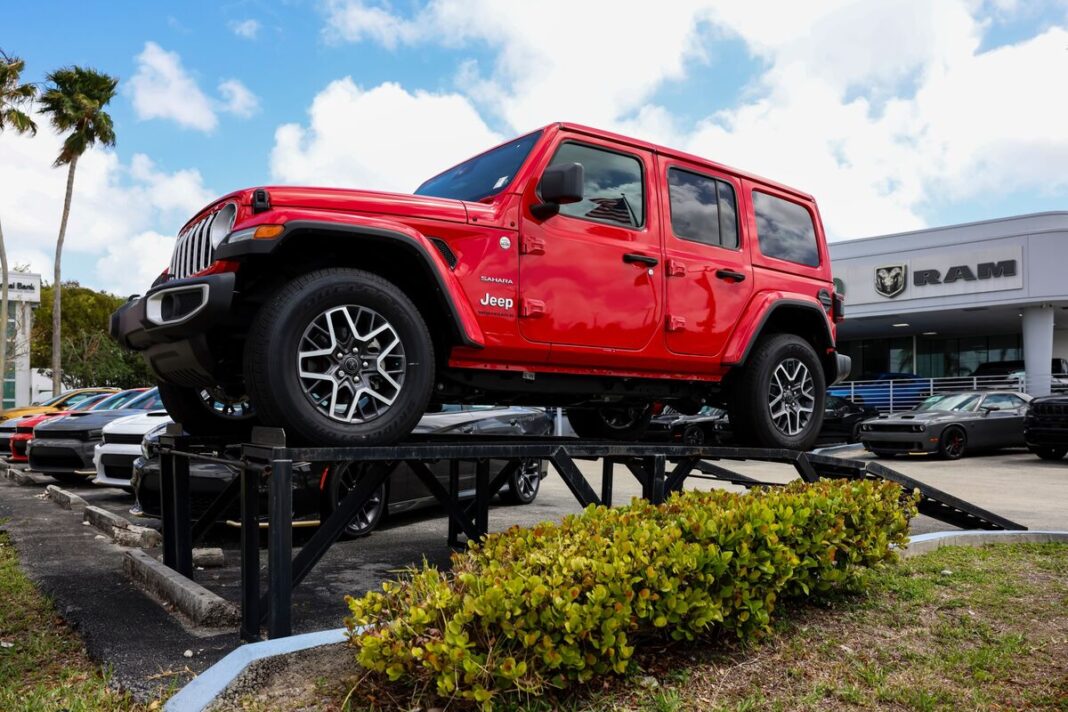Stellantis NV’s $10 Billion Investment in the U.S. Market
Stellantis NV, the automotive giant formed from the merger of Fiat Chrysler Automobiles and PSA Group, is making headlines with plans to invest around $10 billion in the United States. This significant financial commitment comes in the context of stabilizing its operations, especially for its highly esteemed Jeep SUVs and Ram pickups. For Stellantis, the U.S. market is not just a significant component of its sales; it’s vital for sustaining profitability and competitiveness in the fast-evolving automotive landscape.
Focus on Strategic Growth
The decision to inject capital into the U.S. market reflects Stellantis’ strategic pivot toward securing a stronger presence in a region that is critical for its growth. The investment is expected to enhance manufacturing capacity, foster innovation in electric vehicle (EV) technology, and potentially create jobs. As the automotive industry increasingly shifts toward sustainability, Stellantis is poised to align its offerings with consumer demand for more environmentally friendly vehicles. This focus on EV development is particularly important, given the growing regulatory pressures and consumer expectations for greener transportation options.
Revamping Iconic Brands
Jeep and Ram are emblematic brands within Stellantis’ portfolio, known for their robust performance, ruggedness, and loyal customer bases. With the planned investment, Stellantis aims to upgrade and expand its production facilities to enhance the quality and efficiency of these vehicles. Jeep’s lineup, including its popular Wrangler and Cherokee models, is expected to see innovations that blend traditional capabilities with cutting-edge technology. Meanwhile, Ram pickups, celebrated for their durability and performance, are likely to benefit from enhancements aimed at maintaining their competitive edge in the bustling truck market.
Responding to Market Challenges
The automotive sector has faced numerous challenges in recent years, including supply chain disruptions, semiconductor shortages, and shifting consumer preferences. Stellantis, like many of its peers, has felt the strain of these challenges. By concentrating resources in the U.S., where the market is recovering, Stellantis hopes to mitigate risks and position itself favorably against competitors also vying for market share in electric and hybrid vehicles.
Commitment to Local Employment
Investing in U.S. operations not only benefits Stellantis but is also a boon for local economies. The anticipated investment is expected to create thousands of jobs, contributing to community development and workforce stability. In an era where many automakers have shifted production overseas, Stellantis’ commitment to U.S. manufacturing sends a robust message about the importance of domestic job creation and economic resilience.
Technological Advancements and EV Focus
At the heart of Stellantis’ investment strategy is a commitment to innovation. The automotive market is undergoing rapid transformation, with electric vehicles taking center stage. Stellantis is focused on developing new technologies that align with its vision for a sustainable future. By reallocating significant resources towards battery technology, electric drivetrains, and autonomous vehicles, the company is positioning itself as a forward-thinking leader in the automotive industry.
Navigating a Competitive Landscape
As Stellantis prepares to roll out its extensive investment plan, it is also keenly aware of the competitive landscape. Rivals such as Ford, General Motors, and newer entrants like Tesla are aggressively pursuing the electric vehicle space. Stellantis will need to ensure that its investments yield tangible results that resonate with consumers. This means not only enhancing vehicle offerings but also strengthening marketing strategies to effectively communicate the benefits of its vehicles in a crowded market.
Engaging with Stakeholders
The announcement of this investment comes at a time when Stellantis is also looking to engage more comprehensively with its stakeholders, including shareholders, employees, and local communities. Effective communication about the expected outcomes of the investment and how they align with broader corporate goals is paramount. By fostering transparency and open dialogue, Stellantis can build trust and support among its various stakeholder groups.
Conclusion
In summary, Stellantis NV’s planned $10 billion investment in the U.S. market signifies a pivotal step in redefining its future. By focusing on its key brands, embracing electric vehicle technology, and committing to U.S. job creation, Stellantis is laying the groundwork for a resilient and competitive presence in the automotive industry. This strategic investment highlights the importance of innovation and responsiveness in a rapidly changing market, ultimately benefiting both the company and its customers.



